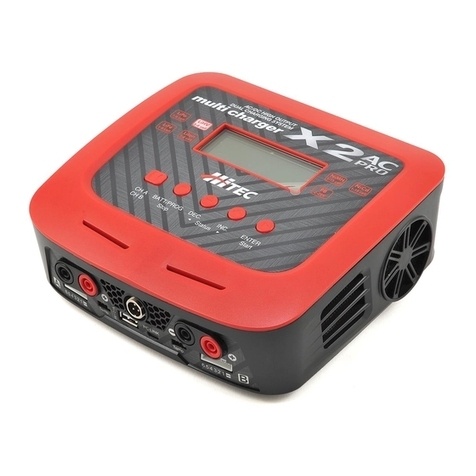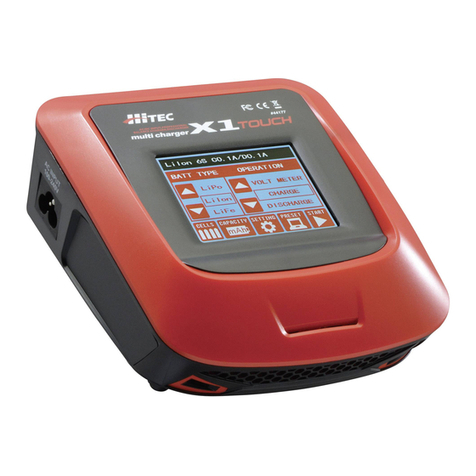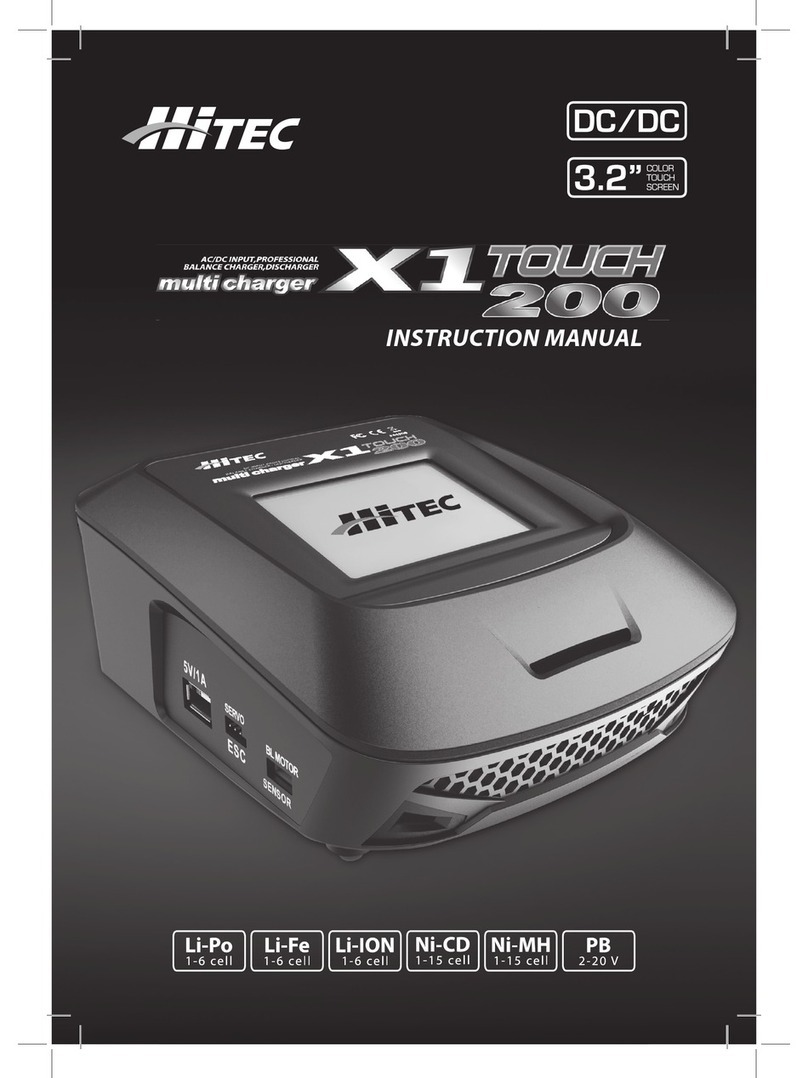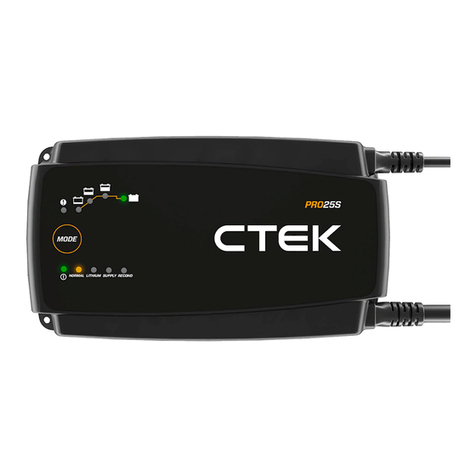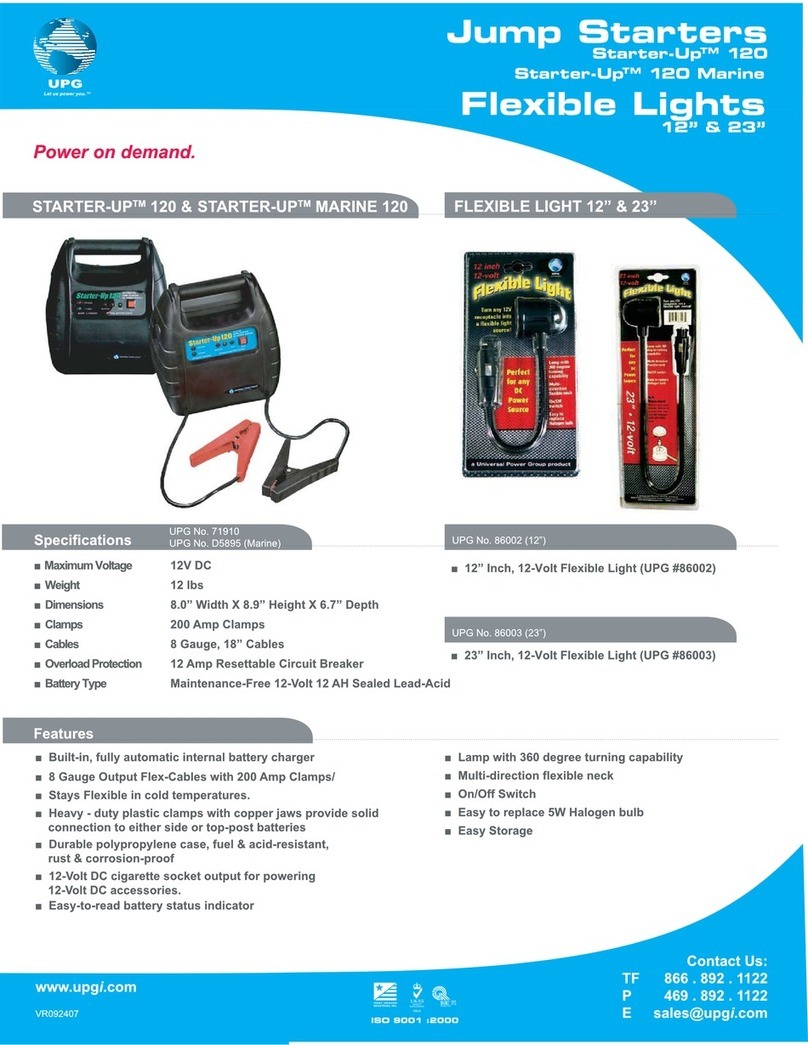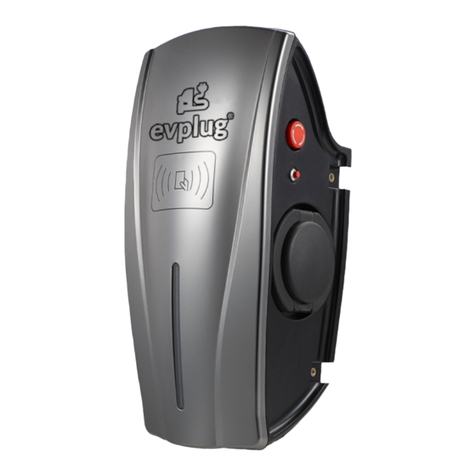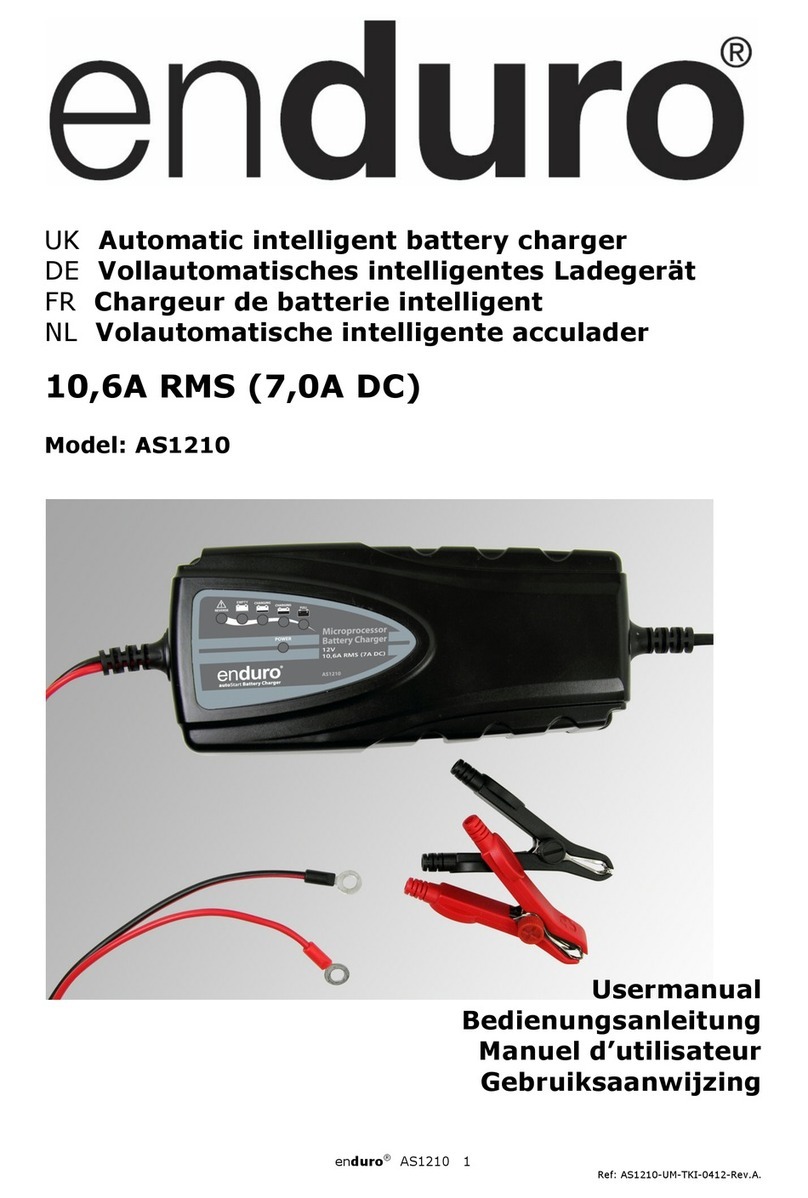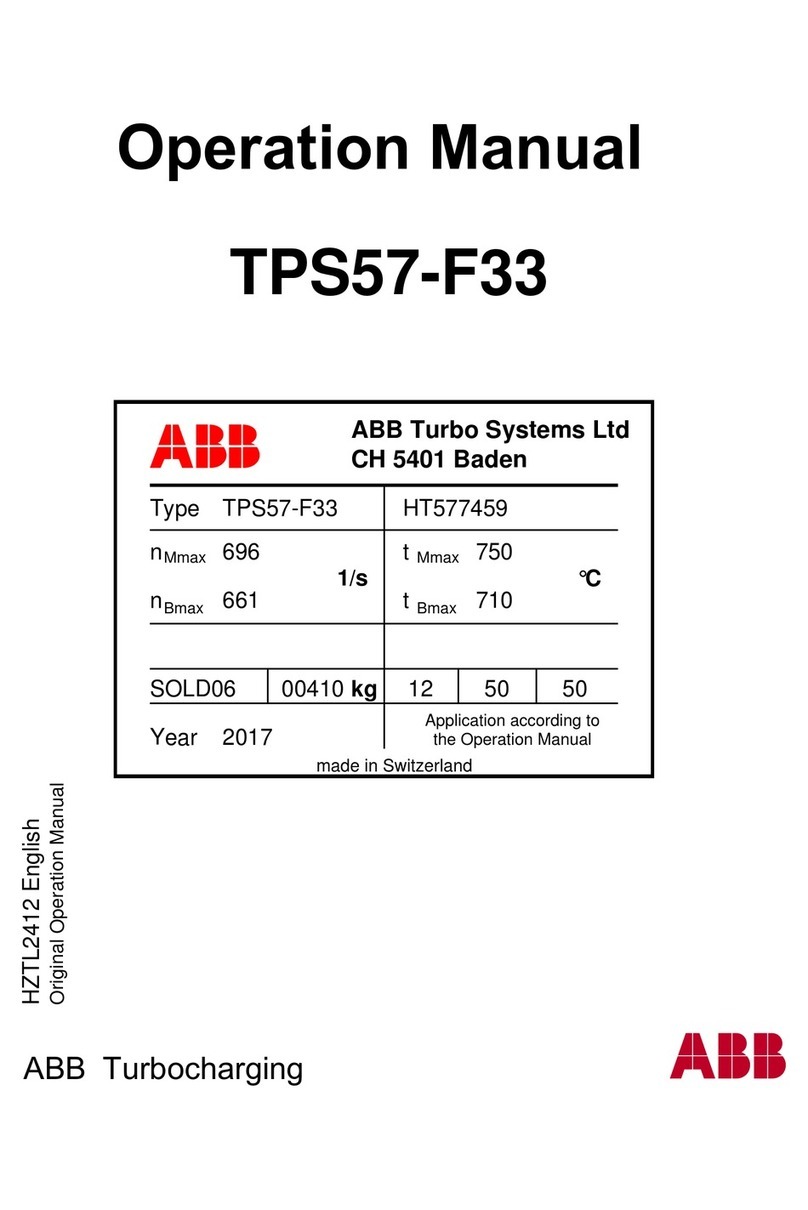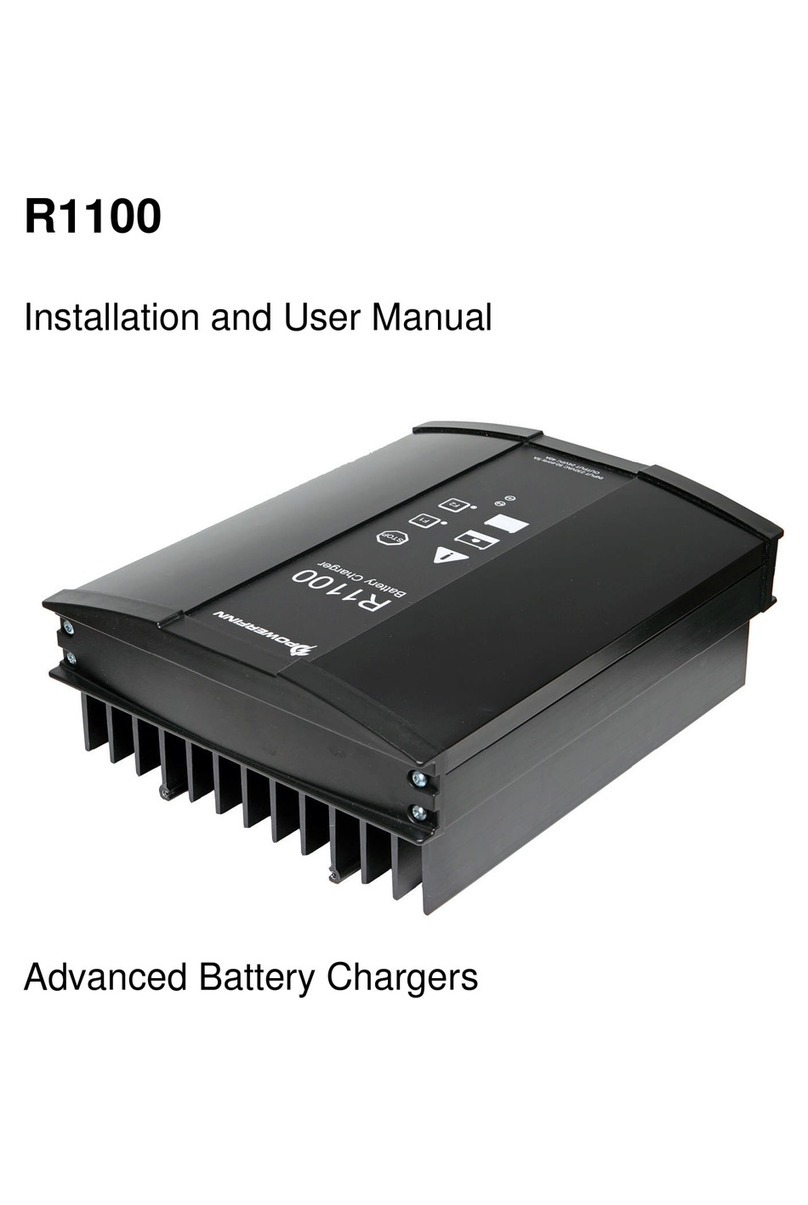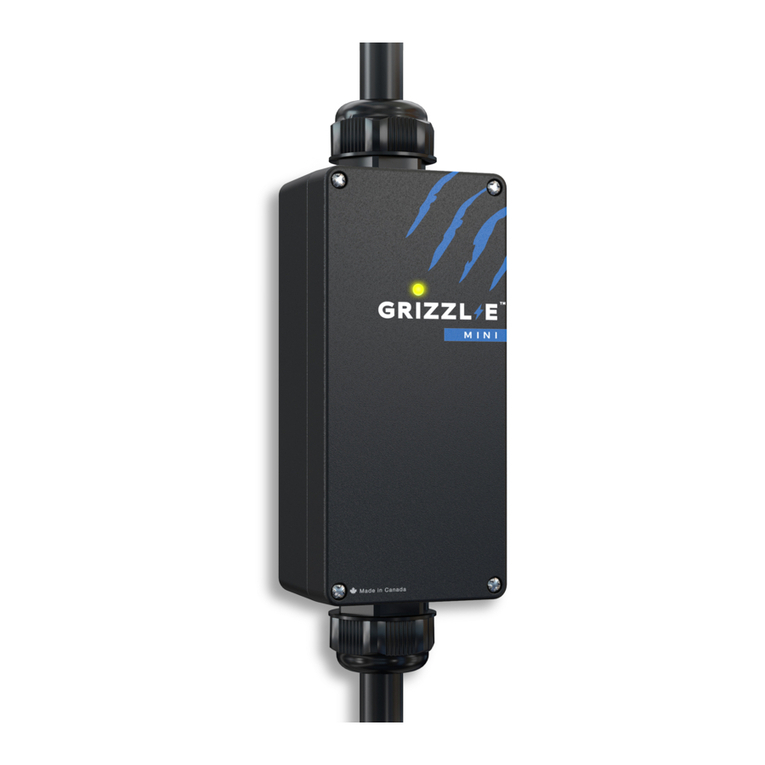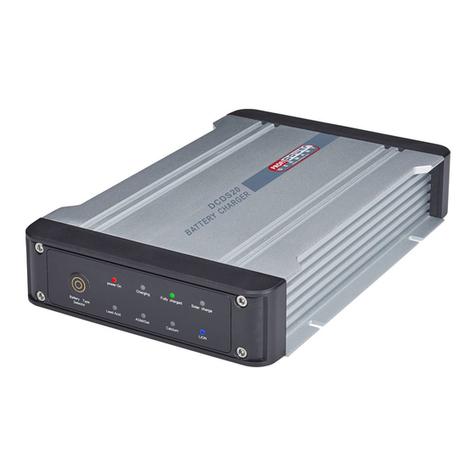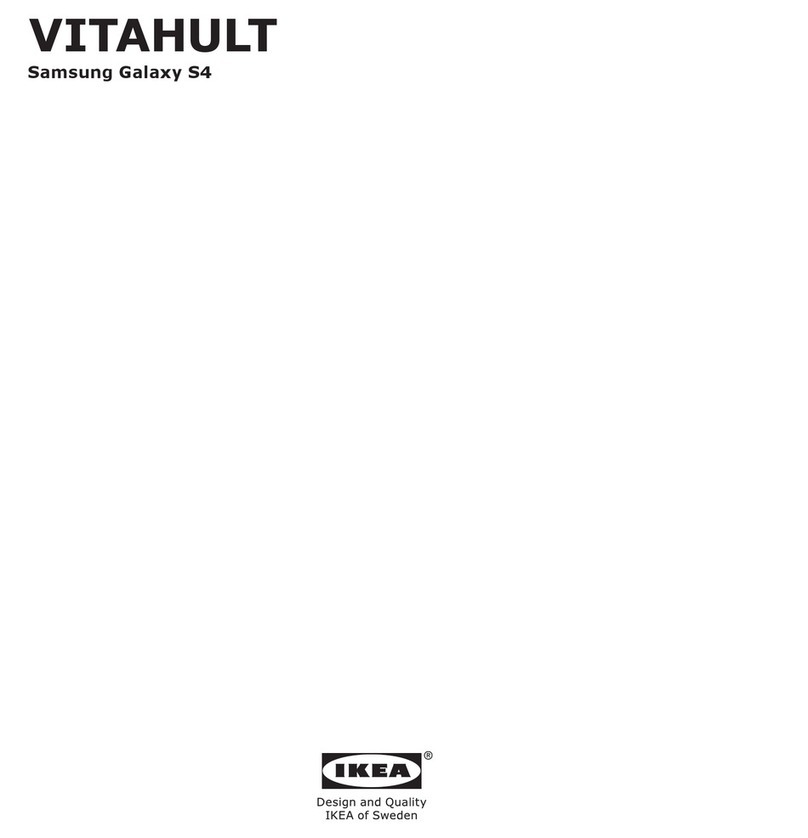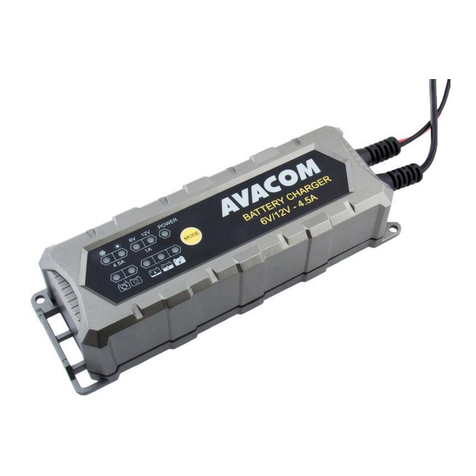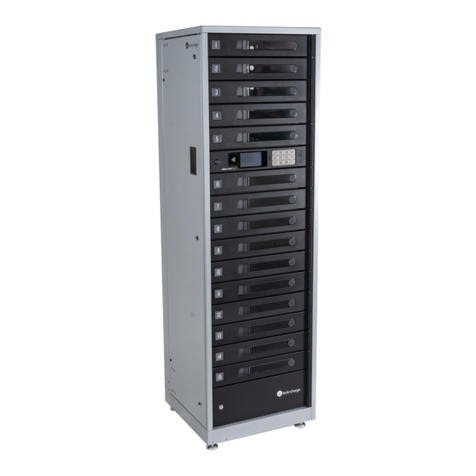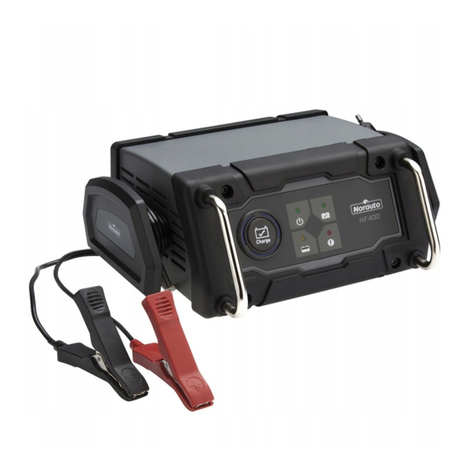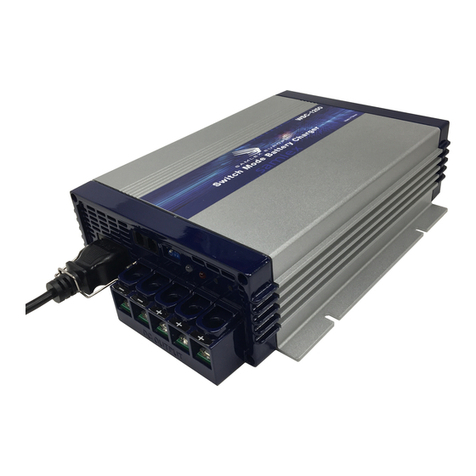Hi-Tec power peak D7 User manual

Operating Instructions

2
Introduction
Thank you for purchasing the Power Peak® D7 EQ-BID automatic battery charger from Hitec, a high-perfor-
mance 400 W charging / discharging station for the demanding modeler. Two outputs, each with 200 watts of
power and up to 20 amps of charge current in a single case. The Power Peak D7 charger has the ability to
charge or discharge your batteries on the move or at home, and very quickly. Despite being extremely easy to
use, this charger is a sophisticated, high-quality unit which requires a certain level of knowledge from the user.
Please read this entire operating manual before using the Power Peak D7 Charger. If you are unsure of its
proper operation after reading the manual, please seek advice from an experienced hobbyist or someone familiar
with proper battery charging procedures.
TABLE OF CONTENTS
Introduction.............................................................................................................................................................02
Warning and Safety Notes.......................................................................................................................................03
Product Layout.......................................................................................................................................................06
Specications..........................................................................................................................................................07
Features.................................................................................................................................................................07
Getting Started.......................................................................................................................................................08
Operations..............................................................................................................................................................09
Menu Structure.......................................................................................................................................................10
Operating the Charger............................................................................................................................................15
Starting the Charge/Discharge Process..................................................................................................................14
Starting the Process...............................................................................................................................................17
User Setup Menu...................................................................................................................................................18
Warning and Error Messages..................................................................................................................................21
Conformity Declarations.........................................................................................................................................22
Disposal and Prop 65 Warning...............................................................................................................................22
Liability Exclusion...................................................................................................................................................23
Warranty and Service.............................................................................................................................................23

3
As with all Hitec products, please read the OPERATING INSTRUCTIONS, WARNING and SAFETY NOTES in
their entirety before you attempt to use your new product.
THE CHARGING AND DISCHARGING OF RC HOBBY BATTERIES CAN BE
DANGEROUS. FAILURE TO FOLLOW THESE EXPLICIT WARNINGS CAN RESULT IN
PROPERTY DAMAGE AND/OR LOSS OF LIFE.
ANEVER LEAVE YOUR CHARGER UNATTENDED WHILE IN OPERATION.
ANEVER CHARGE ON OR AROUND COMBUSTIBLE MATERIALS.
ANEVER CHARGE A DAMAGED BATTERY PACK.
ALOW COST, NO-NAME BATTERY PACKS POSE THE MOST DANGER. WE RECOMMEND
YOU ONLY USE BATTERY PACKS THAT ARE SOLD AND WARRANTIED BY A REPUTABLE
COMPANY.
AIT IS HIGHLY RECOMMENDED THAT YOU UTILIZE A SAFETY DEVICE SUCH
AS A STEEL CASE OR LIPO SACK™ WHILE CHARGING LITHIUM CHEMISTRY BATTERIES.
AIT IS HIGHLY RECOMMENDED THAT YOU KEEP AN OPERABLE “CLASS A” FIRE
EXTINGUISHER IN THE CHARGING AREA.
FAILURE TO FOLLOW THESE WARNINGS CAN BE CONSIDERED NEGLIGENCE BY THE
OPERATOR AND MAY NEGATE ANY CLAIMS FOR DAMAGES INCURRED.
Hitec RCD USA will not be held responsible for any damages or injuries that may occur by persons who fail to
follow these warnings or who fail to properly follow the instructions in this manual.
WARNINGS and SAFETY NOTES
PAY CLOSE ATTENTION TO THESE ICONS, THEY PROVIDE SPECIFIC
INFORMATION IMPORTANT TO THE OPERATION OF YOUR CHARGER
Warning: Be sure to read this section for your own safety.
Caution: Be sure to read this section to prevent accidents and damage
to your charger.
Tip: This section will help you maximize the performance of your charger.
Note: This section will provide more detailed explanations.
Caution
TipWarning
Note
These warnings and safety notes are of the utmost importance. You must follow these instructions for maximum
safety. Failure to do so can damage the charger and the battery and in the worst cases, may cause a re.
NEVER LEAVE THE CHARGER UNATTENDED WHILE IT IS CONNECTED TO ITS
POWER SOURCE. IF ANY MALFUNCTION IS FOUND, TERMINATE THE PROCESS AT
ONCE AND REFER TO THE OPERATION MANUAL.
AThe allowable DC input voltage is 11-18V DC.
AThe allowable AC input voltage is 100-240V AC.
AKeep the charger away from dust, moisture , rain, heat, direct sunlight and excessive vibration.
AIf the charger is dropped or suffers any type of impact, it should be inspected by an authorized service station
before using it again.
AThis charger and the battery should be put on a heat-resistant, non-ammable and non-conductive surface.
Warning
Warning

4
ANever place a charger on a car seat, carpet or similar surface. Keep all ammable volatile materials away
from the operating area.
AMake sure you know the specications of the battery to be charged or discharged to ensure it meets the
requirements of this charger. If the program is set up incorrectly, the battery and charger can be damaged.
AFire or explosion can occur due to overcharging.
ATo avoid a short circuit between the charge lead, always connect the charge cable to the charger rst, then
connect the battery. Reverse the sequence when disconnecting.
ANever attempt to charge or discharge the following types of batteries:
• A battery tted with an integral charge circuit or a protection circuit
• A battery pack which consists of different types of cells (including different manufacturer’s cells)
• A battery that is already fully charged or just slightly discharged and non-rechargeable batteries (these
pose an explosion hazard)
• A faulty or damaged battery
• Batteries installed in a device or which are electrically linked to other components
• Batteries that are not expressly stated by the manufacturer to be suitable for the currents the charger
delivers during the charge process.
PLEASE BEAR IN MIND THE FOLLOWING POINTS BEFORE YOU COMMENCE CHARGING:
• Did you select the appropriate program suitable for the type of battery you are charging?
• Did you set up the adequate current for charging or discharging?
• Have you checked the battery voltage? Lithium battery packs can be wired in parallel and in series, i.e. a
2-cell pack can be 3.7V (in parallel) or 7.4V (in series).
• Have you checked that all connections are rm and secure?
• Make sure there are no intermittent contacts at any point in the circuit.
WARNINGS and SAFETY NOTES (CONT.)
Standard Battery Parameters
LiPo LiIon LiFe NiCd NiMH Pb
Nominal Voltage 3.7V/cell 3.6V/cell 3.3V/cell 1.2V/cell 1.2V/cell 2.0V/cell
Max. Charge Voltage 4.2V/cell 4.1V/cell 3.6V/cell 1.5V/cell 1.5V/cell 2.46V/cell
Storage Voltage 3.8V/cell 3.7V/cell 3.3V/cell n/a n/a n/a
Allowable Fast Charge ≤ 1C ≤ 1C ≤ 4C ≤ 1-2C ≤ 1-2C ≤ .04C
Min. Discharge Voltage 3.0-3.3V/cell 2.9-3.2V/cell 2.6-2.9V/cell 0.1-1.1V/cell 0.1-1.1V/cell 3.0-3.3V/cell
WHEN ADJUSTING YOUR POWERPEAK D7 CHARGING PARAMETERS, BE SURE YOU SELECT
THE PROPER BATTERY TYPE AND CELL VOLTAGE FOR THE TYPE OF CELL YOU ARE CHARGING.
CHARGING BATTERIES WITH THE WRONG SETTINGS MAY CAUSE THE CELLS TO BURST, CATCH
FIRE OR EXPLODE.
Warning

5
CHARGING
Before charging your batteries, it is critical that you determine the maximum allowable charge rate for your
batteries. The Power Peak D7 is capable of charging at high rates that may not be suitable or safe for your
particular batteries. For example, Lithium cells are typically safe to charge at 1C, or the total mAh÷1000. A
1200mAh battery would have a 1C charge rate of 1.2 amps. A 4200mAh battery would have a 1C charge rate of
4.2 amps. Some manufacturers are offering Lithium cells that can be charged at greater than 1C but this should
ALWAYS be veried before charging a Lithium battery at rates higher than 1C. Voltage is just as critical as the
charging amperage rate and this is determined by the number of cells in series, or “S”. For example, a 3S LiPo is
rated at 11.1 volts (“S” multiplied by a single LiPo cell with a nominal voltage of 3.7 volts DC. 3 cells x 3.7 volts
each equals 11.1 volts DC).
Connect the battery’s main leads to the charger output: red is positive and black is negative. Keep in mind that
the gauge or thickness of your charging leads from the Power Peak D7 to your battery must be of an acceptable
current rating to handle the applied charge current. For maximum safety and charging effectiveness, always
match or exceed the main battery lead rating when assembling or selecting your charging leads. If you charge a
battery at a high current rate (amperage) with a charging lead not rated for the chosen amperage, the wire could
get hot, catch re, short out and/or potentially destroy your battery and the charger. When in doubt, always use a
higher gauge wire (lower AWG number). It is common to see charging leads constructed of 14AWG, 16AWG or
18AWG wire.
Always refer to recommendations from your battery manufacturer for your specic battery type and size before
initiating a charge or discharge process.
Do not attempt to disassemble or modify Lithium or Lead-Acid battery packs.
DISCHARGING
The Power Peak D7 discharging functions are for two specic purposes:
• Refreshing the capacity of a Nickel-based battery that has lost capacity over time (NiMH or NiCd).
• Reducing the voltage of a Lithium battery for safe storage.
LITHIUM CHEMISTRY BATTERY PACKS SHOULD ONLY BE DISCHARGED TO THEIR
MINIMUM SAFE VOLTAGE, NO LOWER. DEEP DISCHARGING A LITHIUM CELL WILL
DO PERMANENT DAMAGE. REFER TO THE STANDARD BATTERY PARAMETERS
TABLE ON PAGE 6 OF THIS MANUAL FOR MINIMUM DISCHARGE VOLTAGES.
LiPo & LiHV Charge/Discharge Cycling
Lithium batteries are known to reach full capacity after a break-in period of about 10 charge/discharge cycles.
We do not recommend you use the Power Peak D7 charger to do this; normal use and recharging will achieve
the same results. If you wish to perform a Lithium break-in on the bench with the Power Peak D7, discharging
to minimum acceptable voltages and performing a balance charge at 1C maximum rate is recommended. If you
choose to break in your Lithium batteries under normal use, charging at only 1C for the rst ten cycles will help
ensure full performance and service life from your Lithium cells.
WARNINGS and SAFETY NOTES (CONT.)
Note

6
PRODUCT LAYOUT
SET CONTENTS
Graphic
“STOP / ESC“
button
“START / ENT”
button
“-” button
“+” button
Output 1
USB update
socket
BID chip / key
socket
Output 1
Equalizer port:
Output 1
USB charge
socket BID chip / key
socket
Output 2
Equalizer socket:
Output 2
1
2
3
4
POWER PEAK D7 Charger
XT60 Charge Cords
2-pin T-type Charge Cords
AC Power Cord
DC Power Cord
Balancing Board Connectors
Universal Balancing Boards
5
6
7
Screens
1
2
4
3
5
6
7

7
SPECIFICATIONS
FEATURES
AC Input 110 - 240 Volts AC
DC Input 11 - 18 Volts DC
Charge Circuit Power 200 Watts x 2
Charge Current Range 0.1 ~ 20.0 Amps x 2
Discharge Current Power 36 Watts x 2
Discharge Current Range 0.1 ~ 10.0 Amps x 2
Current Drain for LiPo Balancing 300mA per cell
NiCd/NiMH Battery Cell Count 1 ~ 18 Cells
LiPo/LiFe/Lilon Cell Count 1 ~ 7 Cells
Pb Battery Voltage 2 - 24 Volts
Net Weight 92 oz (2.6kg)
Dimensions 10.6 x 7.9 x 3.3 in
(270 x 200 x 85mm)
DUAL POWER FEATURES
The Power Peak D7 feature two independent 200 Watt charge circuits enabling the user to charge two high
capacity batteries at the same time. The D7 also has a 5VDC 1 amp USB output for charging accessories such
as a cell phone.
20 BATTERY MEMORIES PER CHANNEL
With the ability to store a maximum of 20 battery proles per channel, the D7 allows the user to store all of the
battery’s process settings making setup a breeze.
BATTERY IDENTIFICATION SYSTEM (BID) (Chips and Keys sold seperately)
A very unique feature of the Power Peak D7 charger is Multiplex’s patented Battery Identication system (BID).
As the range of battery types becomes ever more diverse, each type of battery requires its own dedicated
charging process. It is easy to set up the charger incorrectly for a specic type of battery, resulting in costly
damage to the battery. The revolutionary BID system provides a solution to this problem by allowing the user to
assign a small, lightweight BID chip or key which stores all the relevant data for charging and discharging the
battery. When the BID chip or key is connected to the Power Peak D7, it denes the parameters for the charger.
All you need to do is press the Start button, and the charge or discharge process commences. Since all the
essential information is stored on the BID chip, the battery always carries its own data with it, and the data can
easily be displayed on the charger. This function largely eliminates the necessity for PC software and computer
technology in order to obtain an accurate overview of the state of the battery. At the same time, the large graphic
screen provides a particularly convenient data display for the user.

8
INTERNAL INDEPENDENT LITHIUM BATTERY BALANCER
The D7 features a built-in cell voltage balancer so you don’t need to fuss with external balancers while charging.
When used with a balancing connector the D7 can monitor and balance each cell.
UPDATABLE FIRMWARE
With two mini USB sockets, the rmware for the charger can easily be updated by the user at any time.
FAILURE TO CONNECT AS SHOWN IN THIS DIAGRAM WILL DAMAGE YOUR CHAGER. TO
AVOID A SHORT CIRCUIT BETWEEN THE CHARGE LEAD, ALWAYS CONNECT THE CHARGE
CABLE TO THE CHARGER FIRST, THEN CONNECT THE BATTERY.
REVERSE THE SEQUENCE WHEN DISCONNECTING.
1. CONNECTING TO A POWER SOURCE
The Hitec Power Peak D7 features a built-
in switching power supply. You can connect
the AC power cord directly to an AC socket
(100-240V AC) or use an 11-30V DC power
source (such as an automotive battery or
12 Volt power supply).
2. CONNECTING TO THE BATTERY
To avoid short circuits between the
banana plugs, always connect the charge
leads to the charger rst, and then to the
battery second. If the battery has one of
the balance wires attached to the battery,
it should reverse the sequence when
disconnecting the pack.
3. BALANCE SOCKET
If the battery has one the balance wires
attached to the battery it should always be
connected to the charger, with the black
wire aligned with the negative marking.
Take care to maintain correct polarity.
BATTERY AND SUPPLY CONNECTIONS
GETTING STARTED
Battery Connection With Balance Adaptor
12VDC Battery
Connection
12VDC Battery Connection
**12VDC battery or 11~18V
DC, 30 amp
power supply
2S 3S 4S 5S
6S
1
2
3
4
5
6
BATTERY
(+)
(-)
DC 11-18V BALANCE
SOCKET
BALANCE ADAPTOR
X1 CHARGER
BALANCE
LEAD
BATTERY
(+)
(-)
DC 11-18V BALANCE
SOCKET
X1 CHARGER
DC 11-18V BALANCE
SOCKET
(+) (-)
Channel A Channel B
Channel A Channel B
Warning

9
This button is used to stop a process or back out of a parameter setting, it
is also used to scroll through the Battery Selection, User Settings, Data,
and Cycle menus.
This button is used to scroll down in the menus or to increase the value
of a parameter. Pressing the button once increases a parameter by one
increment, holding this button increases in greater increments.
This button is used to scroll up in the menus or to decrease the value
of a parameter. Pressing the button once decreases a parameter by one
increment, holding this button decreases in greater increments.
Pressing this button activates item where the arrow is pointing. Pressing
and holding this button takes you to the process menu. Once a process
is selected, press the button again to start the process.
STOP/ESC
button
STOP/ESC
button
“-” button
“-” button
“+” button
“+” button
START/ENT
button
START/ENT
button
OPERATIONS

10
MENU STRUCTURE
The Memory Name menu is where the parameters
for charging or discharging batteries are dened. The
corresponding settings are then stored in the memory.
(See Page 14 for setting process parameters)
The Data View menu displays information pertaining to
the charging and discharging processes of a Lithium
chemistry battery. When a balancing cable is attached,
the screen will also display the voltage of the individual
cells as well as the highest and lowest cell value.
The User Setup menu allows the user to customize
certain features of Power Peak D7 (See Page 14 for more
information on the parameters and defaults).
STOP/ESC
button
STOP/ESC
button
Once plugged in, turn on the power switch, the charger briey displays Hitec Power Peak D7
then the Memory screen appears. Use the STOP/ESC button to scroll through the menus.
[01] Memory Name...
LiPo 7.4V 200mAh
Chg Current : 2.0mA
dChg Current : 1.0mA
dChg Volt :3.2V/C
TVC Volt :4.20V
[ User Setup ]
Language : English
Rest Time : 10 Min
Safety Cut : ON
Safety Time : 120 Min
Capa Cut : ON
Capa Value : 500mAh
Key Beep : ON
[ DATA VIEW ]
Main : 11.39 V
Max : 3.81V
Min : 3.79V
3.79 V 3.79 V 3.81 V
0.00 V 0.00 V 0.00 V
0.00 V

11
The Cycle Data display shows the charged-in and
discharged capacity, as well as the maximum battery voltage
reached during charging, and the average battery voltage
during discharging of all completed cycles. Data for up to ten
cycles can be viewed; the cycle is selected using the “+” or
“-” buttons. Recorded data can only be viewed at the end of
a cycle. To erase the data, either switch the charger off or
connect a new battery.
C: = Charge D: = Discharge
The BID Edit menu is where the parameters for charging
or discharging batteries are dened. The corresponding
settings are then stored BID chip or key.
(See Page 20 for working with the BID system)
On the BID Info menu, if a system is connected to either
channel, the data stored on the chip is displayed on-screen.
You can scroll through the data stored on the BID chip or key
by pressing the + or - buttons.
BID Edit [ 20/6/2016 ]
LiPo 7.4 V 2000mAh
Chg Current : 2.0mA
dChg Current : 1.0mA
dChg Volt : 3.2 V/C
TVC Volt : 4.20 V
Save to BID
[ BID Info ]
LiPo 7.4 V 2000mAh
Last Chg Capa : 0mAh
Max ChgCapa : 0mAh
Num ChrgCycles : 0
Last dChrgCaps : 0mAh
Max dChrgCaps : v0mAh
STOP/ESC
button
[ Cycle Data ]
No Capacity Voltage
1 C: 0mAh 11.358 V
D: 0mAh 0.000 V
2 C: 0mAh 11.412 V
D: 0mAh 0.000 V
3 C: 0mAh 0.000 V
D: 0mAh 0.000 V
IF A BID CHIP OR BID KEY IS CONNECTED TO EITHER CHANNEL, THE MEMORY NAME
AND CYCLE DATA MENUS ARE REPLACED BY THE BID EDIT AND BID INFO MENUS
RESPECTIVELY.
After connecting the battery, you are now ready to setup the charger to charge your specic type of battery.
When the charger is rst powered on, the Memory Name menu will be displayed. The default mode of the
charger is set for a 2 Cell 2000 mAh Lithium Polymer battery. If this is not the battery you plan on working
with, then you will need to make changes to the operation programming based on the following instruction.
Note

12
Warning
BEFORE SELECTING A PARAMETER OPERATION, IT IS CRITICAL THAT YOU KNOW THE
TYPE OF BATTERY YOU ARE WORKING WITH AND WHAT THE MANUFACTURER
RECOMMENDATIONS ARE FOR CHARGING OR DISCHARGING. FAILURE TO FOLLOW THE
MANUFACTURERS RECOMMMENDATIONS CAN RESULT IN DAMAGE TO THE BATTERY
AND POSSIBLE EXPLOSION OR FIRE.
The following is a step-by-step guide for setting the battery parameters on the Power Peak D7. The screen
shots and operation templates shown are for the operation of a Li-Po BALANCE CHARGE program.
Refer to the Available Operations chart on page XX to setup your specic type of battery.
Whenever a parameter value in the program needs to be adjusted, scroll to it using the + or – buttons.
Highlight the value by pressing the START/ENT button; to change the value press the + or - buttons.
The new value will be stored by re-pressing the START/Enter button.
OPERATING THE CHARGER
BATTERY SELECT
With the arrow pointing to the battery parameters, press
START/ENT to highlight the battery type. Use the + or –
to cycle through the battery types, once you have selected
the battery type that you are working with, press START/ENT
to conrm and move onto the battery voltage prompt.
VOLTAGE SELECT
With the voltage value highlighted, use the + or – to increase
or decrease the voltage to match your battery’s voltage.
Press START/ENT to conrm and move onto the Battery
Capacity prompt.
CAPACITY SELECT
With the capacity value highlighted, use the + or – to
increase or decrease the capacity to match your battery’s
capacity. Press START/ENT to conrm. Now is a good time
to check to make sure the settings match that of
your battery.
[ 01 ] Memory Name...
LiPo 7.4 V 200mAh
Chg Current : 2.0mA
dChg Current : 1.0mA
dChg Volt : 3.2V/C
TVC Volt : 4.20 V
[ 01 ] Memory Name...
LiPo 7.4 V 200mAh
Chg Current : 2.0mA
dChg Current : 1.0mA
dChg Volt : 3.2V/C
TVC Volt : 4.20 V
[ 01 ] Memory Name...
LiPo 7.4 V 200mAh
Chg Current : 2.0mA
dChg Current : 1.0mA
dChg Volt : 3.2V/C
TVC Volt : 4.20 V
Note
THE VOLTAGE WILL INCREASE IN VALUE
BASED ON THE NOMINAL VOLTAGE OF A
SINGLE CELL.

13
CHARGE CURRENT (Chg Current)
Press the + button to move the arrow to the charge current
prompt. Press the START/ENT button to highlight the value
prompt. Use + or – to increase or decrease the charge
current. Press START/ENT to conrm.
NEVER EXCEED THE DISCHARGE
CURRENT RECOMMENDED BY YOUR
BATTERY’S MANUFACTURER.
DISCHARGE CURRENT (dChrg Current)
Press the + button to move the arrow to the dChg charge
current prompt. Press the START/ENT button to highlight the
value prompt. Use + or – to increase or decrease the charge
current. Press START/ENT to conrm.
NEVER EXCEED THE DISCHARGE
CURRENT RECOMMENDED BY YOUR
BATTERY’S MANUFACTURER.
DISCHARGE VOLTAGE (dChg Volt)
This is used to set the end voltage during the discharge
process, the value is set per cell. Press the + button` to
move the arrow to the discharge voltage prompt.
Press the START/ENT button to highlight the value prompt.
Use + or – to increase or decrease the discharge voltage.
Press START/ENT to conrm.
SETTING A DISCHARGE VALUE LOWER THAN
WHAT IS RECOMMENDE IN THE CHART ON
PAGE XX CAN PERMANENTLY DAMAGE
YOUR BATTERY.
[ 01 ] Memory Name...
LiPo 7.4 V 200mAh
Chg Current : 2.0mA
dChg Current : 1.0mA
dChg Volt : 3.2V/C
TVC Volt : 4.20 V
[ 01 ] Memory Name...
LiPo 7.4 V 200mAh
Chg Current : 2.0mA
dChg Current : 1.0mA
dChg Volt : 3.2V/C
TVC Volt : 4.20 V
[ 01 ] Memory Name...
LiPo 7.4 V 200mAh
Chg Current : 2.0mA
dChg Current : 1.0mA
dChg Volt : 3.2V/C
TVC Volt : 4.20 V
Warning
Warning
Warning

14
TERMINAL VOLTAGE CONTROL (TVC)
This is used to set the upper voltage limit during the charge
process, the value is set per cell. Press the + buttont to move
the arrow to the discharge voltage prompt. Press the START/
ENT button to highlight the value prompt. Use + or – to
increase or decrease the discharge voltage.
Press START/ENT to conrm.
SETTING A TVC VALUE HIGHER THAN
WHAT IS RECOMMENDED BY YOUR
BATTERY’S MANUFACTURER CAN
PERMANENTLY DAMAGE YOUR BATTERY.
TRICKLE CHARGE RATE
When the charge process ends, current is fed to the battery
to compensate for the natural discharge. This feature is used
to set the trickle current rate. The function can be turned
OFF or adjusted between 50 to 300mA.
DELTA PEAK SETTLING
The automatic charge program utilizes Delta Peak voltage
detection. When the battery’s voltage exceeds the threshold,
the charge process is terminated automatically.
The Delta Peak value adjustable range is 3mV/Cell to
15mV/C. We recommend you use 10mV/Cell on a NiMH
battery and 15mV/Cell on a NiCd battery.
STARTING THE CHARGE / DISCHARGE PROCESS
Once all the parameters are set, you are ready to execute the process. Depending on the type of
battery you have chosen, you will have the available choices listed on the following page:
BEFORE SELECTING AN OPERATION, IT IS CRITICAL THAT YOU KNOW THE TYPE OF
BATTERY YOU ARE WORKING WITH AND WHAT THE MANUFACTURER RECOMMENDATIONS
ARE FOR CHARGING OR DISCHARGING. FAILURE TO FOLLOW THE MANUFACTURERS
RECOMMENDATIONS CAN RESULT IN DAMAGE TO THE BATTERY AND POSSIBLE
EXPLOSION OR FIRE.
[ 01 ] Memory Name...
LiPo 7.4 V 200mAh
Chg Current : 2.0mA
dChg Current : 1.0mA
dChg Volt : 3.2V/C
TVC Volt : 4.20 V
[ 02 ] Memory Name...
NiMh 4 Cell 2100mAh
Chg Current : 2.1mA
dChg Current : 1.0mA
dChg Volt : 1.0V/C
Trickle : 100mA
Delta Peak : 4Mv/C
[ 02 ] Memory Name...
NiMh 4 Cell 2100mAh
Chg Current : 2.1mA
dChg Current : 1.0mA
dChg Volt : 1.0V/C
Trickle : 100mA
Delta Peak : 4Mv/C
Warning
Warning

15
BATTERY TYPE OPERATION OPERATION DESCRIPTION
LiPo,
LiFe,
Li-ion
Charge The charge mode is for charging LiPo/LiFe/LiIon/ LiHV batter-
ies in normal mode.
Discharge This mode is for discharging LiPo/LiFe/LiIon batteries.
Storage
This program is for charging or discharging a lithium battery
which will not be used again for an extended period of time.
Fast Charge A fast charge will result in a smaller than usual charging ca-
pacity but will reduce the total charge time.
Balance This mode is for balancing the voltage of
LiPo battery cells while charging.
NiMH,
NiCD
Charge The charger will charge NiMH and NiCd batteries using the
charge current set by the user.
Auto Charge
In this program, the charger detects the condition of the con-
nected battery and automatically charges the battery.
NOTE: You should set the upper limit of the charge current to
avoid damage by excessive charging current. The Power Peak
D7 may not be able to detect the charge capacity of low resis-
tance batteries.
Discharge This mode is for discharging a NiMH/NiCd battery.
Re-Peak In re-peak charge mode, the charger can peak charge the bat-
tery once, twice, or three times in a row automatically. This is
good for conrming the battery is fully charged and for check-
ing how well the battery receives fast charges.
Cycle Automatically charges/discharges the battery up to 5 times.
This process can enhance the performance of
NiMH/NiCd batteries.
Pb
(Lead Acid)
Charge This mode is for charging a Pb battery using the charge current
set by the user.
Charge This mode is for discharging a Pb battery using the charge current set
by the user.
Press and hold the START/ENT button until the charge selection screen is displayed like one of the
examples shown below and on following page.
[ 01 ] Memory Name...
LiPo 7.4 V 200mAh
Charge :
Discharge :
Storage :
Fast Charge :
Balance :
[ 02 ] Memory Name...
NiMH 4Cell 2100mAh
Charge :
Auto Chg :
Discharge :
Repeak :
Cycle :
Lithium Battery Process Screen NiMH/NiCd Process Screen

16
Now that you have set all the parameters for your battery and chosen which process you want to run, you
are ready to execute the operation. Now would be a good time to check to make sure the charge settings
are correct and within the battery manufacturer’s recommendations.
BEFORE YOU BEGIN CHARGING YOUR BATTERY, MAKE SURE YOU
HAVE READ AND UNDERSTAND ALL OF THE WARNINGS AND SAFETY
INFORMATION CONTAINED ON PAGE 3.
DURING CHARGING/DISCHARGING, THE BATTERY SHOULD BE PLACED
INSIDE A FIRE PROOF/RETARDANT BAG AND ON A FIRE PROOF SURFACE,
AWAY FROM OTHER COMBUSTIBLE OBJECTS.
[ 03 ] Memory Name...
Pb 6Cell 200mAh
Charge :
Discharge :
[ 02 ] Memory Name...
NiMH 4Cell 2100mAh
Repeak : 2
[ 02 ] Memory Name...
NiMH 4Cell 2100mAh
Cycle Mode : D C
Cycle : 2
Pb Process Screen
Press and hold the START/ENT button until the charge
selection screen is displayed like one of the examples
shown on the left.
If you are working with a NiMH or NiCd battery and choose
the Re-Peak charge mode, you will be prompted to enter
the number of re-peak cycles you want to perform.
You can choose from 1 - 3.
If you are working with a NiMH or NiCd battery and choose
the Cycle charge mode, you will be prompted to choose if
the rst process is to charge or discharge and how many
cycles you want the charger to perform.
You can choose from 1 – 5 cycles.
Warning
Warning

17
This shows what information is available while charging a
Lithium type battery. The information is displayed across
two screens.
Pressing the START/ENT button takes you to a display of
the voltage curve line, pressing it a second time takes to
the cell balance screen.
Press and hold the START/ENT button until you hear a conrmation beep and see BATTERY CHECK WAITING,
if everything is setup correctly the process will begin.
Note
LITHIUM BATTERIES MUST ALWAYS BE CHARGED WITH THE
BALANCE LEAD CONNECTED.
PROGRAM STOP: During the charging process, press STOP/ESC to stop the process.
PROGRAM COMPLETE: When the charging process is nished, an audible sound will Be heard.
INFORMATION DISPLAYED DURING THE PROCESS:
Once the process has begun, you can use the + and - buttons to scroll through the various information displayed
during the process. The types of information displayed are Time, Input Capacity, Input Voltage, Feed Current,
Input Voltage* Battery Resistance, and Internal Temperature. Additionally while charging a NiCd or NiMH battery,
you can see the Cycles and Re-Peak processes.
*When the charger is attached to an AC power source, the voltage displayed is that of the internal MPU.
STARTING THE PROCESS
[ Charge ] LiPo
Time 00:01:22
Capacity 67mAh
Voltage 12.09V
Current 2.06A
In Volt 17.82V
Batt Res 33mΩ
Int. Temp. 380C
[ Cycle ] NiMH
Cycle D > C
Time : 00:11:22
Capacity : 87mAh
Voltage : 12.09V
Current : 2.00A
In Volt : 17.82V
Batt Res : 178mΩ
Int. Temp : 380C
This shows what information is available while charging a
NiMH battery. The information is displayed across
two screens
Pressing the START/ENT button takes you to a display of
the voltage curve line.
IT IS POSSIBLE TO ALTER THE CHARGE CURRENT DURING A CHARGE/DISCHARGE
PROCESS: NAVIGATE TO THE “CURRENT” FUNCTION BY PRESSING THE “START/
ENT.” BUTTON, THEN CHANGE THE CURRENT USING THE “+” OR “-” BUTTONS.
THE NEW VALUE APPLIES ONLY TO CURRENT PROCESS, AND IS NOT SAVED.
Note

18
The Data View menu displays information pertaining to the
charging and discharging processes of a Lithium chemistry
battery. When a balancing cable is attached, the screen will
also display the voltage of the individual cells as well as the
highest and lowest cell value.
The voltage curve screen shows the voltage curve during
the charge or discharge process. Also shown is the actual
voltage as well as elapsed time.
USER SETUP MENU
When powered on for the rst time, the Power Peak D7 charger will load with default values in the programmable
user settings. The screen displays the following information in sequence and the user can change the value
of the parameters on each screen. Use the + and - buttons to scroll through the option, when you are ready
to change the parameter values in the program, press START/ENT to highlight the value, and then select the
appropriate values with + and - buttons. Store the value by pressing
START/ENT once.
The screen shots and table below show the user settings that can be changed as well as the available options.
[ DATA VIEW ]
Main : 11.39 V
Max : 3.81V
Min : 3.79V
3.79 V 3.79 V 3.81 V
0.00 V 0.00 V 0.00 V
0.00 V
V(VOLTAGE CURVE)
11.46V 00:01:38
00:01:38
[ User Setup ]
Language : English
Rest Time : 10 Min
Safety Cut : ON
Safety Time : 120 Min
Capa Cut : ON
Capa Value : 500mAh
Key Beep : ON
[ User Setup ]
Buzzer : English
Input Low : 10 Min
Int. Temp : ON
Reset : 120 Min
Version : ON

19
Item Selection Description
Language English, German,
Italian and French
Menu language
Pause 1 - 60 Minutes
Pause setting between charge / discharge cycles
1 -60 minutes. This setting is typically only used with NiMH or NiCd
batteries
Time Cut-off ON/OFF
Activates the time limit safety function. The default is ON, it is not rec-
ommended to change this.
Time Limit 1 - 720 Minutes
When you start a charge process, the integral safety timer of the bat-
tery automatically starts running at the same time. This is programmed
to prevent overcharging the battery if it proves to be faulty, or if the
termination circuit cannot detect the battery is full. The value for the
safety timer should be generous enough to allow a full charge of the
battery.
Capacity
Cut-off
ON / OFF Activates the capacity limit cut-off safety function. Default is on.
Capacity
Cut-off
100-60,000mAh
This program sets the maximum charge capacity that will be supplied
to the battery during a charge. If the delta peak voltage is not detected
nor has the safety timer expired for any reason, this feature will auto-
matically stop the process at the selected capacity value. Default is
5000mAh.
Key Beep ON/OFF
Pause setting between charge / discharge cycles
1 -60 minutes. This setting is typically only used with NiMH or NiCd
batteries.
Buzzer ON/OFF Turns end of process melody on or off. Default is on.
Input Low 10.3 - 11.0V Users can change the DC Input low voltage warning as necessary.
The default value is 11.0V.
Int. Temp Displays the internal temperature of the charger.
Reset
Selecting this resets the charger to factory defaults and erases all the
previously set parameters. After selecting this, you have to press and
hold the START / ENT button for at least two seconds.
Version Displays the charger’s rmware version.

20
USING THE BATTERY IDENTIFICATION SYSTEM (BID)
(Chips and Keys sold seperately)
When a programmed BID chip or key is connected to the Power Peak D7, it denes the parameters for the
charger. All you need to do is press the Start button, and the charge or discharge process commences. Since
all the essential information is stored on the BID chip, the battery always carries its own data with it, and the data
can easily be displayed on the charger.
As soon as a BID chip or key is connected to the charger, the charger switches to BID mode for displaying
or programming the BID chip or key. If the beeper is active, you will hear a brief beep at this point. The same
applies if the charger is switched on with a BID chip or key already connected.
An analysis of the above data display shows the following.
• The last charged-in capacity was 1000mAh.
• The highest charged-in capacity was 1100mAh.
• To date, the battery has been charged six times.
• The most recent discharge capacity was 500mAh.
• The highest discharged capacity was 650mAh.
BID Edit [ 20/06/2016 ]
LiPo 7.4V 2000mAh
Chg Current : 2.0mA
dChg Current : 1.0mA
dChg Volt : 3.2V/C
TVC Volt : 4.20V
Save to BID :
BID Edit [ 20/06/2016 ]
LiPo 7.4V 2000mAh
Last Chg Capa : 1000mAh
Max ChgCapa : 1100mAh
Num Chrg : 6
Last dChrg Caps 500mAh
Max dChrg Caps 6500mAh
The BID chip or Key is programmed just like a memory slot.
Refer to page 14 to set the charge or discharge parameters.
Once set, use the + and – buttons to scroll to Save to BID
and press START/ENT to write the settings to the BID Chip
or Key already connected.
The BID Information screen displays a variety of data such
as last charge capacity, maximum charge capacity, the
number of discharge cycles, last discharge capacity and
maximum charge capacity.
Note
THE DATA CANNOT BE DISPLAYED WHILE ANY
PROCESS IS CURRENTLY ACTIVE.
Table of contents
Other Hi-Tec Batteries Charger manuals
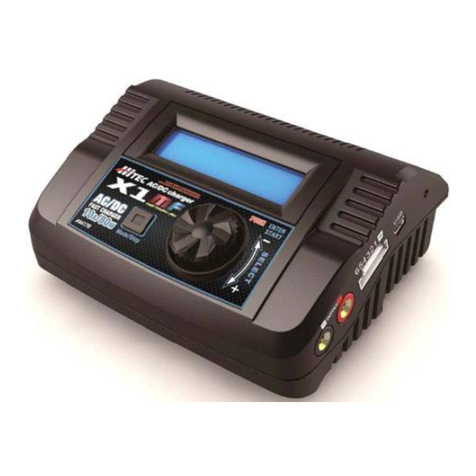
Hi-Tec
Hi-Tec X1MF User manual

Hi-Tec
Hi-Tec 44246 User manual
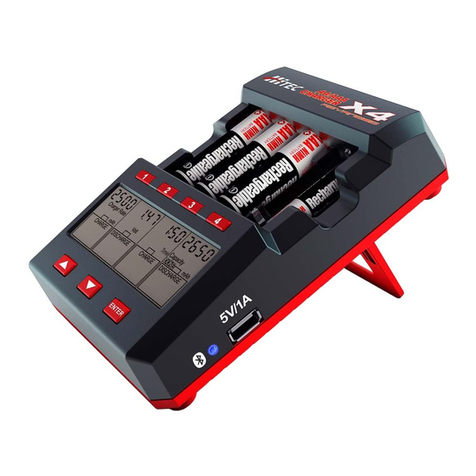
Hi-Tec
Hi-Tec X4 ADVANCED User manual
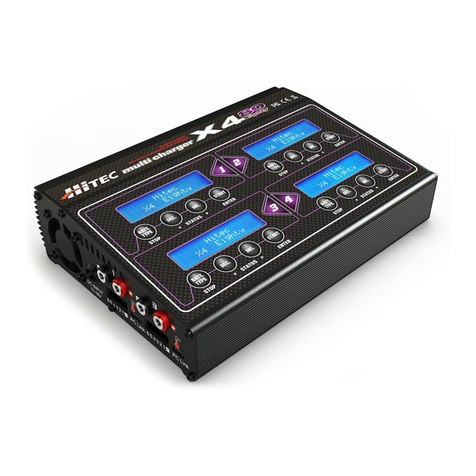
Hi-Tec
Hi-Tec X4-80 User manual
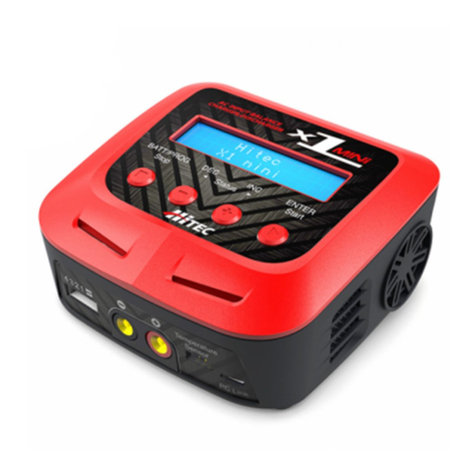
Hi-Tec
Hi-Tec X1 mini User manual

Hi-Tec
Hi-Tec X4 AC Pro User manual
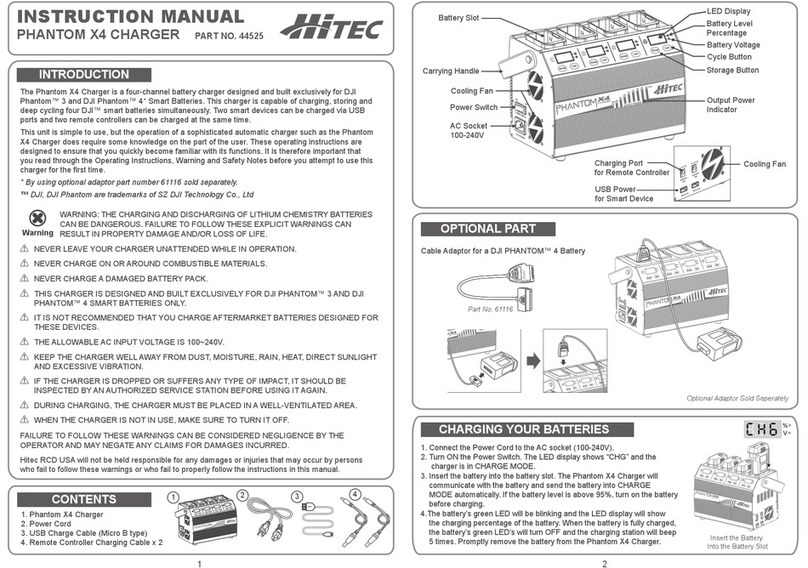
Hi-Tec
Hi-Tec 44525 User manual

Hi-Tec
Hi-Tec RDX1 Mini User manual

Hi-Tec
Hi-Tec RDX1 Mini User manual
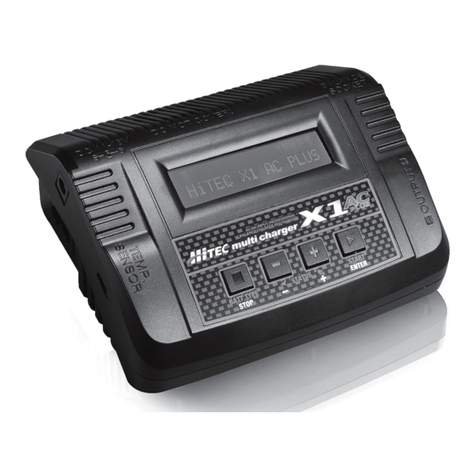
Hi-Tec
Hi-Tec X1 Touch User manual
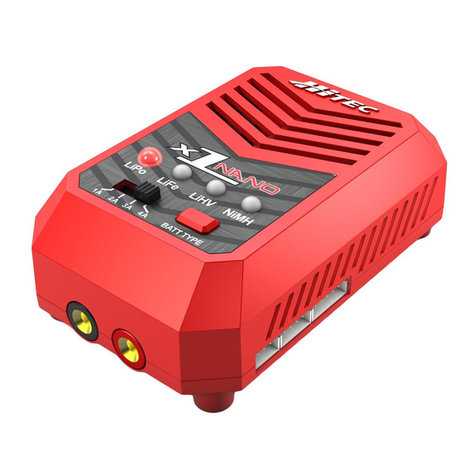
Hi-Tec
Hi-Tec X1 Nano User manual
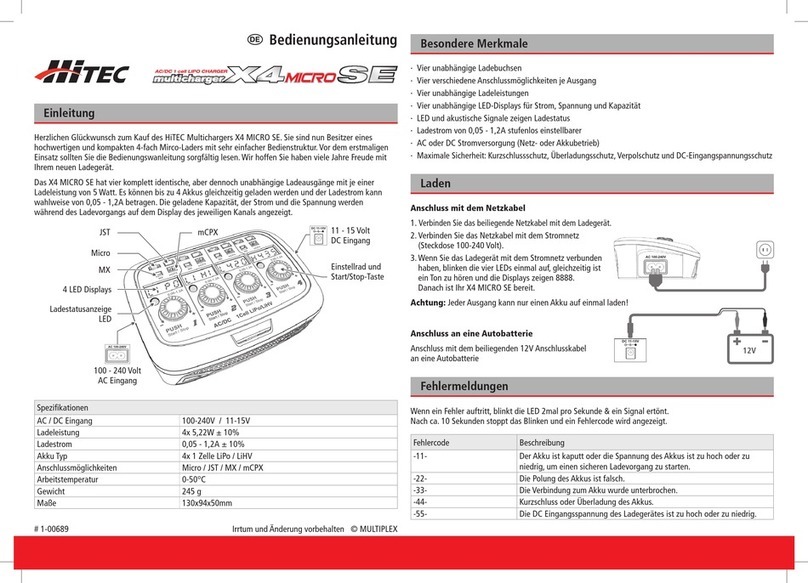
Hi-Tec
Hi-Tec X4 MICRO SE User manual
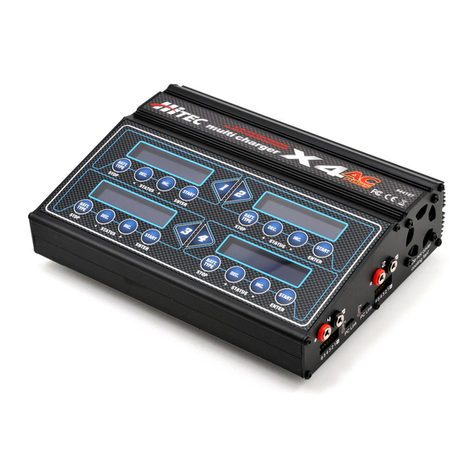
Hi-Tec
Hi-Tec multi cahrger X4 AC Plus User manual
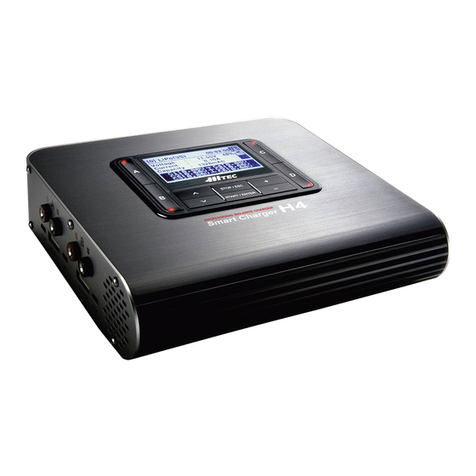
Hi-Tec
Hi-Tec Smart Charger H4 User manual

Hi-Tec
Hi-Tec RDX 2 PRO User manual
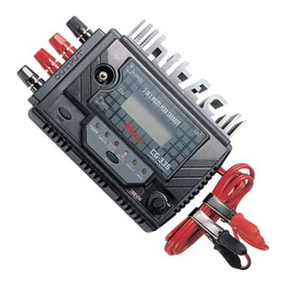
Hi-Tec
Hi-Tec CG-330 User manual
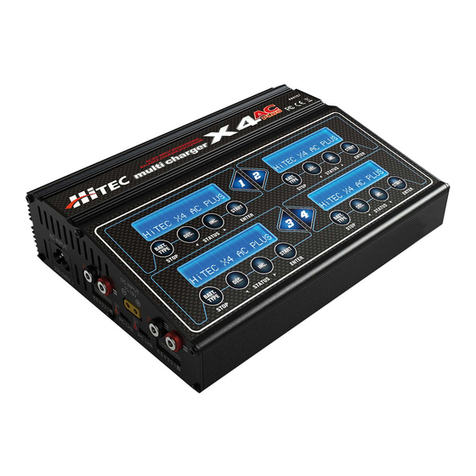
Hi-Tec
Hi-Tec X4AC PLUS User manual
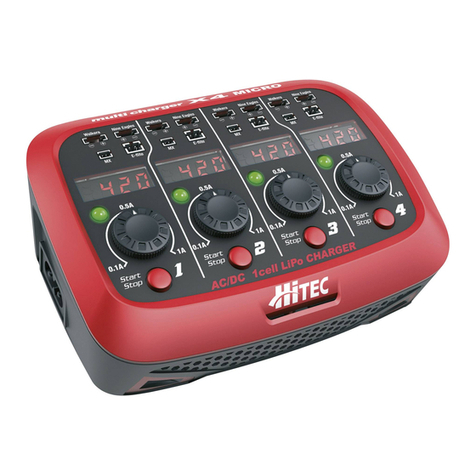
Hi-Tec
Hi-Tec X4 MICRO User manual
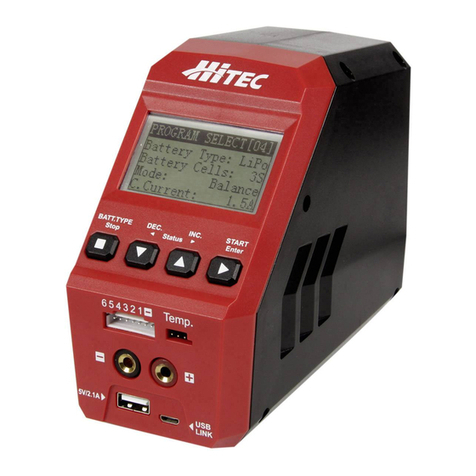
Hi-Tec
Hi-Tec X1RED User manual
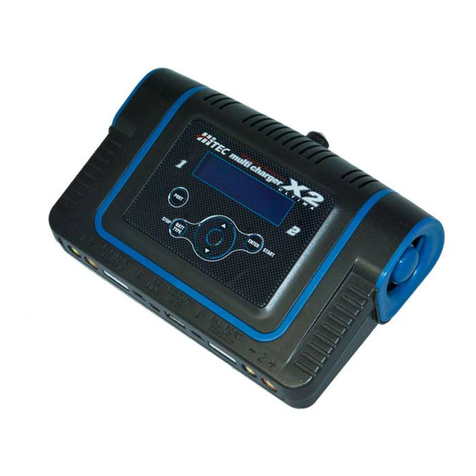
Hi-Tec
Hi-Tec X2 Ultima User manual

